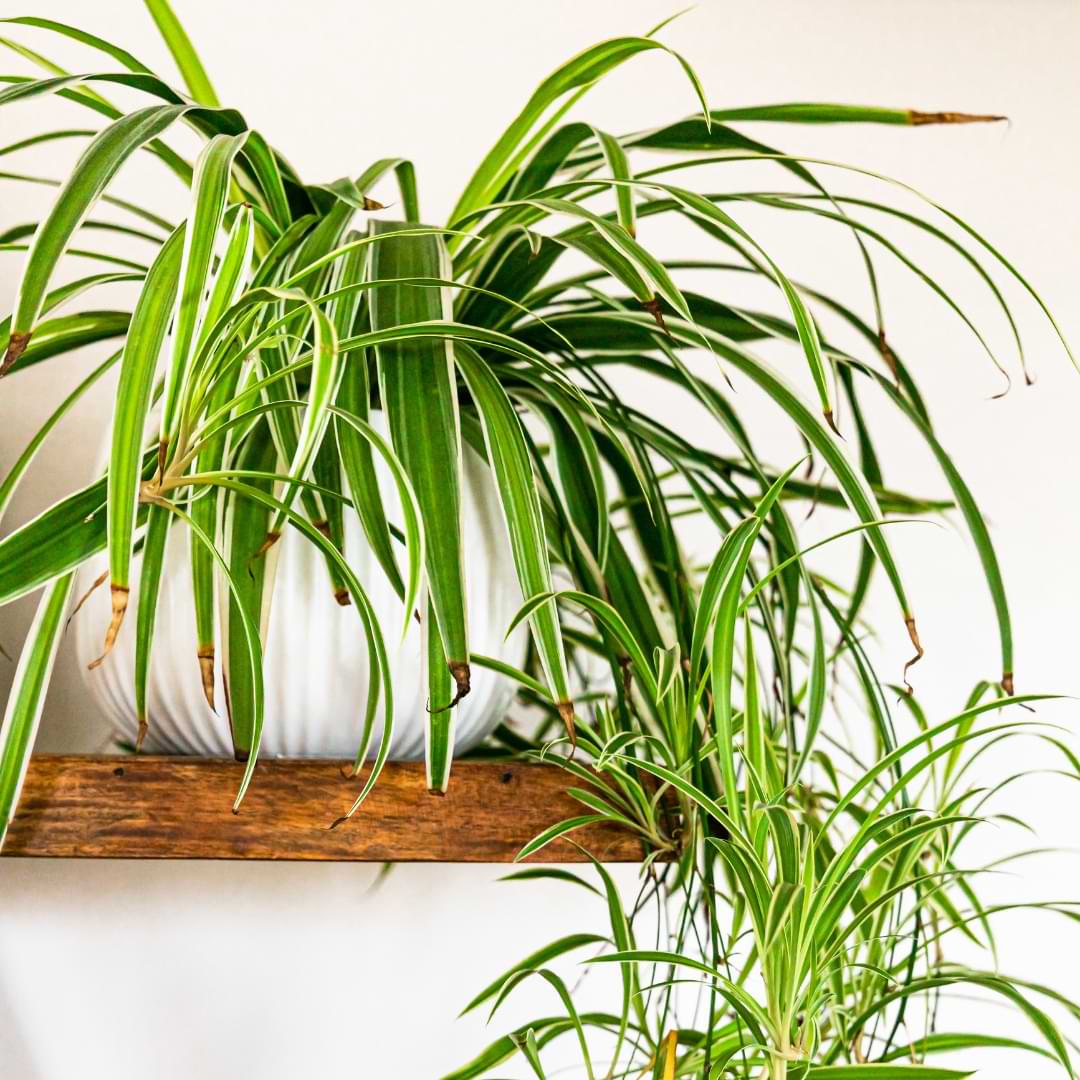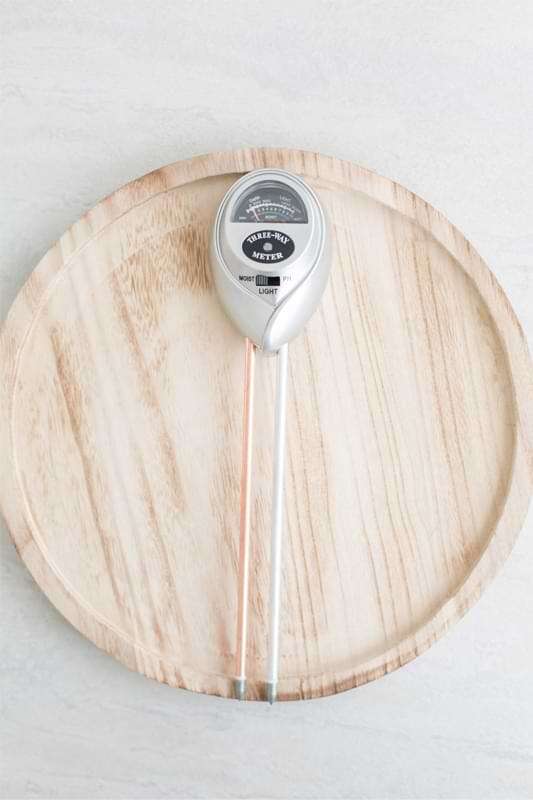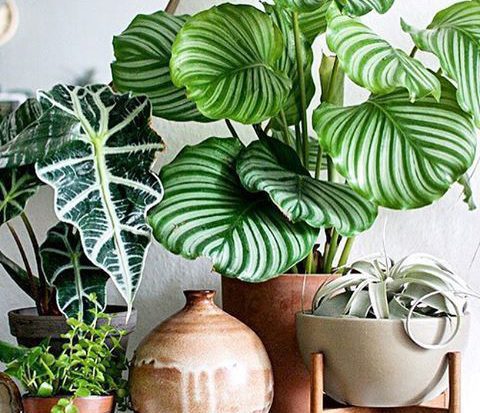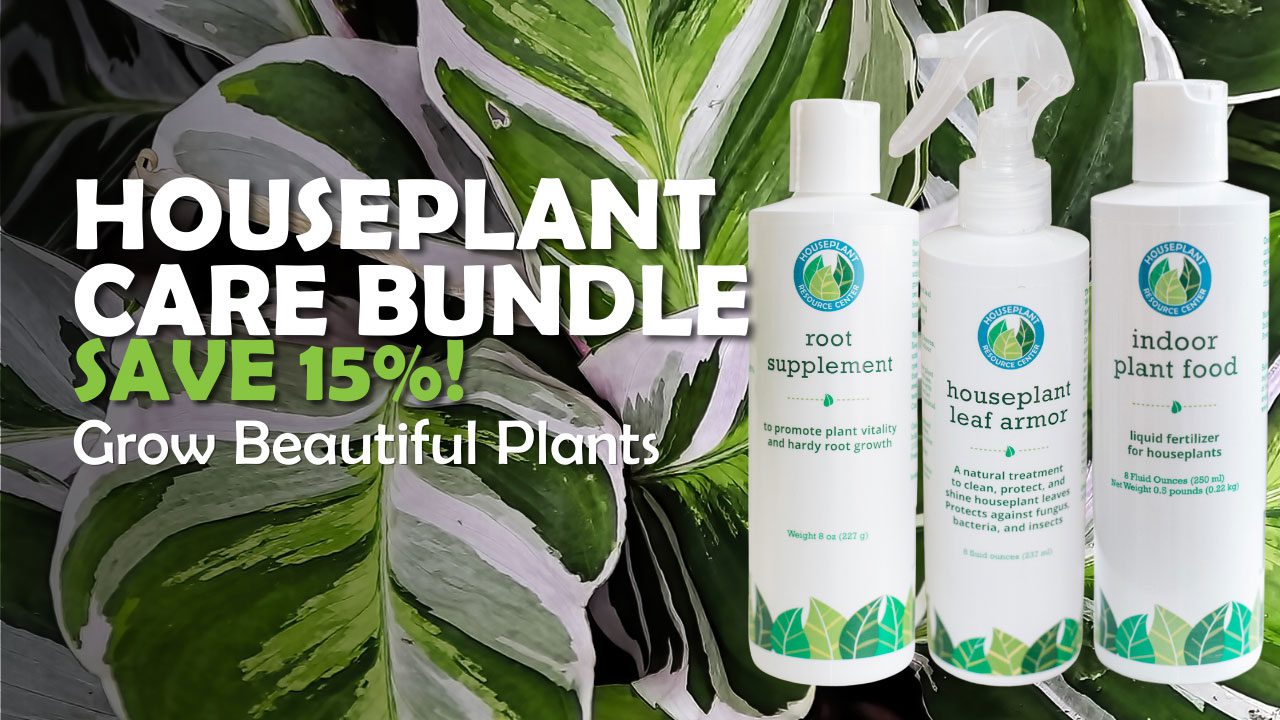Spider plants are known for being some of the most easygoing, beginner-friendly houseplants out there. But they aren’t completely foolproof! These classic houseplants can develop problems if they aren’t cared for properly, and one of the most common signs that your plant isn’t happy is curling leaves. In this article, we’ll talk about what this sign can mean and what to do if your spider plant leaves are curling.
Luckily, when you know what to look for, finding a solution can be quite simple. And most of these fixes are quite easy!
Here’s what to do when your spider plant leaves start to curl.
Table of Contents
Why Your Spider Plant Leaves Are Curling
The frustrating thing about curling leaves on your spider plant—and a lot of houseplant problems, actually—is that they can have lots of different causes. Sometimes it can be tricky to determine the root issue! (Pun intended, we couldn’t resist.)
Pinning down the true problem can require a little detective work. So, let’s go through the potential causes of curling leaves on a spider plant so you can use the process of elimination to pinpoint the culprit and determine your next steps.
Underwatering
Watering issues are the most common cause of curling leaves on spider plants. (In fact, watering issues seem to be responsible for at least half of houseplant health problems, from our observation.)
To see if this is the issue, feel the soil with your finger or use a wooden chopstick or, better yet, a moisture meter to check on the moisture level of the soil.
If the soil has dried out—especially if you only watered the plant a few days ago—it’s likely that your plant is underwatered.
How to Fix
If your plant is underwatered, the obvious solution is to water it. Give the soil a good soaking and let it drain out the bottom of the pot.
To prevent the issue from recurring, make sure you’re watering regularly. When the top few inches of soil feel dry or when a moisture meter reads 3, it’s time to water!
Note: If your plant consistently dries out just a few days after you water, no matter how thoroughly you water, it’s possible that the soil drains too quickly. This is unlikely, but if you keep running into this problem, try repotting into a fresh potting mix with a little more water retention. (But not too much, because that can lead to our next problem.)
Overwatering
Just like underwatering, overwatering can also be the reason your spider plant leaves are curling. (frustrating, we know).
To see if this is the problem, we need to again evaluate the moisture level of the soil and think about when you last watered. If the soil feels soggy or reads wet on a moisture meter more than a week or so after you last watered, your plant might be overwatered.
How to Fix
The solution for overwatering is a little more complex than for underwatering. Sure, you could try watering less often, but the problem could also be with your soil or your pot drainage. If your pot doesn’t have drainage holes or if the hole is obstructed, obviously, water isn’t going to drain out properly.
But if your soil is too dense, compacted, or poorly aerated, you might run into overwatering issues even if you aren’t watering that often.
If you determine that overwatering is the cause of your curling leaves, consider the quality of the soil as well and whether you need to repot into a more appropriate soil.
Water Purity
Spider plants can be sensitive to chemicals and other substances in tap water, and this can cause the leaves to curl. If you’ve been watering your plant with tap water and other factors seem to be in order, this might be your problem.
How to Fix
If you think this is the problem (or even if you want to prevent future problems), try watering your spider plant with purified, distilled, or rainwater rather than tap or softened water. If that isn’t possible, at least leave water out overnight before using it so chlorine and other chemicals can evaporate.
Soil pH
Soil pH levels are an important—but often overlooked—element of plant care. Spider plants thrive in slightly alkaline soil with a pH level of 6.1 to 6.5. Luckily, most houseplant soils fall within this range, but some might not, and the pH can change over time.
The best way to test the pH levels of your soil is with a pH meter. The moisture meter we recommend also measures soil pH (and light levels!), so it’s a great multitool!
How to Fix
If you find that your soil’s pH isn’t ideal for your spider plant, simply repot into a more appropriate soil. Our Indoor Plant Soil is perfect for spider plants, and you can find plenty of potting mixes on the market that will work.
Root Rot
Curling leaves can also signal root rot, especially if you notice soft, dark-brown spots on the leaves. Root rot is a bacterial or fungal infection that often occurs when a plant is severely overwatered, and it’s important to treat it quickly before it kills your plant.
If the soil is wet and you notice those telltale brown spots on the leaves or a bad smell coming from the soil, your plant might have root rot. Act fast!
How to Fix
Unpot your plant and massage as much of the old soil out of the root ball as possible. Trim away any darkened, mushy, or stinky roots.
Repot your spider plant into a clean pot and fresh, fast-draining soil. Replace the plant in a spot with lots of bright, indirect sunlight and go a little easier on the water for a while. When you do water, try mixing in a bit of our Root Supplement to help the roots heal and prevent the infection from returning.
Pests Infestation
Household pests like spider mites, mealybugs, and thrips can suck the juices out of your spider plant’s leaves and cause them to curl. You might also notice tiny red or brown spots, cottony webbing, or honeydew (sticky, clear residue left behind by some insects), as well as the presence of actual insects!
How to Fix
In most cases, you can treat insect infestations by rinsing off your plant to remove as many of the insects as possible (though make sure to tip your plant to avoid washing the insects into the soil).
You can also use a lint roller on the leaves to physically remove the pests, or a kitchen syringe to squirt them off. In extreme cases, you may need to wash your plant with a gentle insecticidal soap or even completely remove the most affected leaves to stop the infestation from spreading.
Once you’ve removed as many of the insects as you possibly can, spray the plant with our Leaf Armor, a diluted neem oil or a gentle insecticide. You may need to do this a few times as new generations of pests hatch.
Tip: Neem oil has a strong, garlicky smell, so you may want to do this outside if possible!
Learn more about dealing with common household pests here!
Direct Sunlight
Spider plants do best in bright, indirect sunlight. Direct sun, especially during midday or afternoon, can scorch the plant’s leaves and cause them to curl.
If the sun’s rays fall directly on your plant’s leaves after about 10:00 am, this could be the problem. (You may also notice dry brownish-red spots, which are scorch marks on the leaves.)
This can often take plant owners by surprise when the seasons change and the sun’s position in the sky shifts. Your spider plant might be fine all year and then suddenly be in direct sun because the sun has moved!
Keep an eye on your plant’s light conditions throughout the year, and make adjustments if it looks like your plant will be in direct sun at a certain point in the year.
How to Fix
Naturally, the solution here is to move your spider plant to a better spot where it will get plenty of bright, indirect sunlight but little to no direct sun.
If your plant has suffered serious scorching, those leaves won’t heal, unfortunately. It might be a good idea to remove the damaged leaves so the plant can redirect its energy toward healthy new growth.
Pot-Bound
If your spider plant becomes pot-bound, it might have trouble growing as well as absorbing water and nutrients. And—you guessed it—this can cause the leaves to curl.
If the plant is root-bound, you may notice that the soil is hard and compacted in the pot. You might even see the roots growing around the inside of the pot in a circle, or popping out the top of the soil and even the drainage hole. This is a sure sign that the roots are squished and looking for a place to go!
It’s also a good idea to repot your spider plant into a slightly larger pot every year or two to give the roots room to spread out. So, if it’s been longer than that, your plant could be root-bound and ready for a pot upgrade!
Repotting will also refresh the soil and replenish nutrients and refresh the soil’s microbiome.
How to Fix
If your spider plant is pot-bound (or if it’s just been more than two years since you last repotted), it’s time to repot.
Unpot your spider plant by tipping the pot on its side and carefully coaxing the plant out. Don’t pull it out by the leaves or stems! If necessary, you can use a knife or trowel to lever the root ball out. Then massage the root ball to break it up and remove as much of the old soil as you can.
Find a clean pot that’s a size (2-3 inches larger) than the old pot and add some fast-draining soil to the bottom. Place the spider plant in the pot and fill in the sides with more soil. Add some soil on top as well, but leave an inch or two of headroom for watering.
When the plant is repotted, give it a good watering and let it drain. Add more soil to the top as needed to compensate for shrinkage.
Now just put your plant back in a spot that made it happy before you repotted it and let it adjust to its new potting situation. Avoid fertilizing for a month or two after repotting to avoid damaging the sensitive roots. (But make sure to resume fertilizing at some point. A growing plant can use up all the nutrients in its pot in just a few months!)
Note: If your plant looks droopy after repotting, this is normal and it should recover within a week or so. Being moved and repotted is traumatic, and sometimes it takes plants a little while to adjust!
Final Thoughts on Curling Spider Plant Leaves
Curling leaves and other plant problems are simply signs that our plants aren’t happy with something about their environment. The best treatment and prevention is providing the best care you possibly can, including ideal light conditions, proper watering, well-draining soil, and repotting as needed. The more you dial in your care routine, the happier your plants will be!
Houseplant Resource Center is full of resources and products to help you grow the healthiest, most beautiful houseplants possible. We’ve got you!
Have more questions about your spider plant and other houseplant issues? For additional help and support, join our online community and more!
The Last Houseplant Book You Will Ever Need





